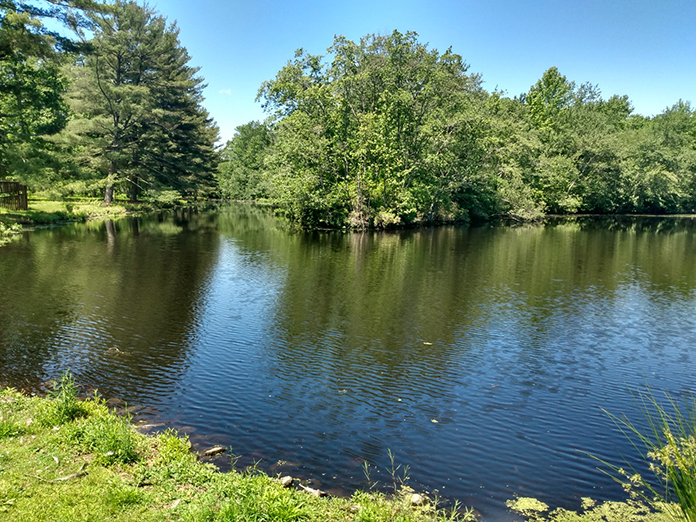
HOWELL – Ten years ago, the Township of Howell made the historic decision to set aside a tract of land that had been reclaimed by nature, and in doing so, preserved not only open space, but a piece of history, as well.
Beginning in 1987, Howell began to slowly acquire parcels of land that were eventually linked up to form one contiguous stretch of open space. The goal, according to the township’s 2012 Master Plan land use amendment, was to establish “a venue for passive recreation while protecting the natural resources and the environmentally sensitive nature of the tract.” Through an extraordinary effort across state, county and local offices, years of research, negotiation and work culminated in the designation of the Bear Swamp Natural Area in 2012.
Tucked away and unmarked from the road, the Bear Swamp offers visitors a chance to hike through undisturbed natural areas while also passing by some of Howell’s history.
For those who want to make the trek, it is first necessary to find the entrance to the park itself. Located on Maxim Road approximately two-tenths of a mile west of the intersection with Lakewood Farmingdale Road, the one-lane gravel and dirt entrance is unmarked, and leads back to the gate at the head of the hiking trail.
Once through the gate, the trail quickly enters into the tree line, where hikers are surrounded by woods before breaking out briefly to an open field on the right side. But upon its return to the woods, the trail then splits in two as it loops through the eastern part of the preserve. Well off the designated trail, one can find the ruins of the Maxim Powder Company. Reclaimed by the forest, the brick foundations of the complex may be seen, with vegetation and moss testifying to the passage of time.
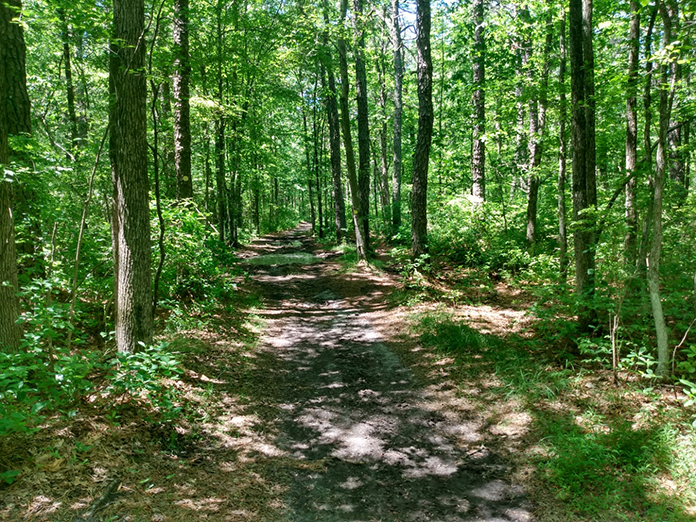
“There was a gentleman, Hudson Maxim,” explains Robert Novak, President of the Howell Historical and Heritage Society. “He had the powder works in the Maxim area of Howell, where the actual road goes [near the] Bear Swamp Park.”
Maxim, for whom roadways and sections of Howell Township are named, is rumored to have lit his cigars with an eccentric flair using sticks of dynamite. Maxim actually lost his left hand in an industrial accident in 1894, but it was allegedly unrelated to his legendary cigarette lighting habit.
It is true, however, that two of his factory workers died in an explosion at the plant in 1900.
“It wasn’t the nicest material to work with,” says Novak. “Some of the shoes that they wore had to have copper nails [so] they wouldn’t create spark. The way shoes used to be made, you would have small shoe nails driven to hold the sole onto the part of the shoe. So, they had [them] made with copper nails because the iron or steel nails at the time could create a spark, and you really wouldn’t want to have that in a gunpowder factory.”
Maxim’s innovation, smokeless gunpowder, was patented in 1889 and revolutionized warfare as it made detection by the enemy much more difficult. Weapons and ammunition apparently ran in the Maxim family bloodline, as his brother, Hiram, invented the Maxim gun, which functioned as the first true automatic machine gun. Not to be outdone, his nephew, Hiram Percy Maxim, invented the silencer.
Eventually Maxim sold the patents to DuPont and continued working in later life as a munitions expert until his death in 1927. Over the course of his lifetime, Maxim acquired numerous patents thanks to his munitions expertise, and even became a wartime consultant to the U.S. Government due to his knowledge of firearms.
“Some of the things that happened, I don’t say got lost to history, but they’re small events on their own,” says Novak about Maxim’s role in America during the late Nineteenth and early Twentieth Centuries. “But you take all these pieces together over time and they had some contribution to overall U.S. history. But they’ve become sidebars or side notes to the overall marks of history. I mean, smokeless powder I guess, was a good thing.”
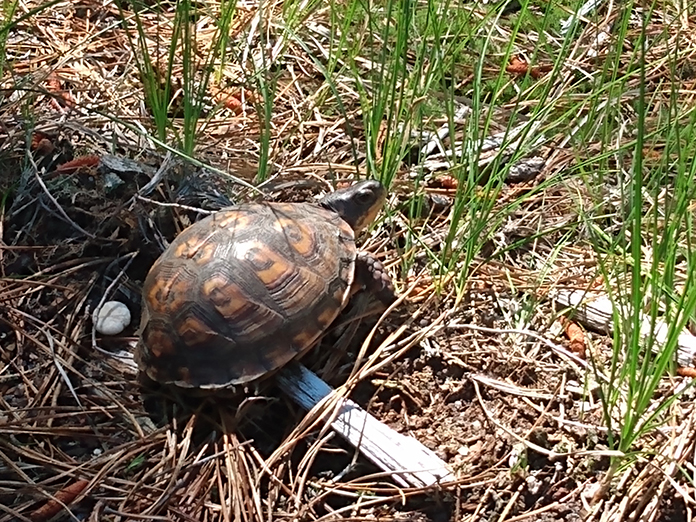
However, despite the loss of an appendage, Maxim was undeterred from dressing as King Neptune and being the man who crowned the first two Miss Americas in the 1920s. Whether the remains of the powder factory are haunted is a matter for visitors to decide, but those venturing to the site are strongly discouraged from disturbing the ruins in any way, as they represent not only Howell’s, but America’s history, as well. In addition, the ruins are fragile and dangerous. Anyone who makes the mistake of going off trail to find the ruins will undoubtedly need to check for ticks, as the swamp is fertile ground for them as well as a variety of other biting insects.
The biodiversity of the Bear Swamp was, in fact, a key point that helped get the area preserved. While it is a swamp, the variety of flora and fauna that may be found here is quite impressive. While bears are ubiquitous in New Jersey and have been spotted in all 21 counties of the state, the chance of encountering one, despite the swamp’s name, is fairly remote. That said, Howell has recently had bear sightings within the township’s borders, so hikers should keep their eyes and ears open for such an eventuality.
Amphibians such as Fowler’s toad are common, but the area is also renowned for the rare Pine Barrens tree frog. Mammals such as deer are commonplace. Reptiles are also found here, and while snakes may be difficult to locate under the lush, shaded canopy of the deciduous forest, it is not uncommon to encounter the eastern box turtle.
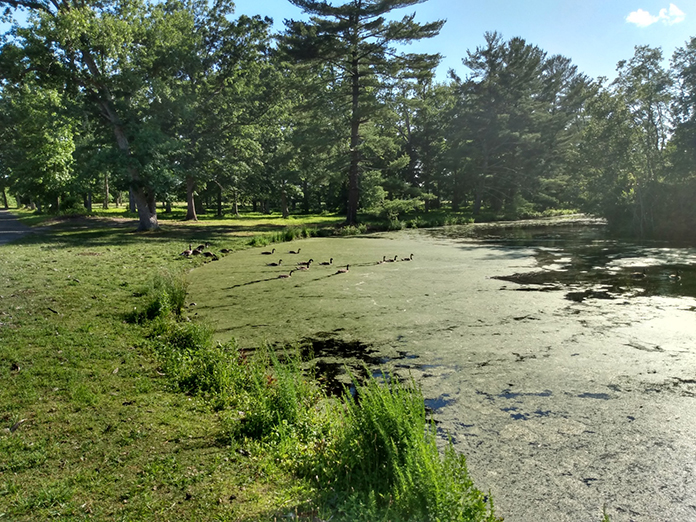
A variety of birds may be seen, but more often heard, in the woods. Visitors will undoubtedly see the most prominent member of the bird family to visit the site, namely, the Canadian goose. The geese collect in droves in the pond near the entrance, which is fed by several of the six streams that traverse the site. Freshwater fishing is permitted at the location, but swimming is prohibited.
Deeper into the site, the trail again breaks out of the lush forest and runs along the tracks of the Southern Railroad which serves to bisect the Bear Swamp preserve. As one might imagine, this part of the trail is considerably less buggy, but one left turn back into the tree line places hikers into wet, muddy passages and a battle with biting insects once again.
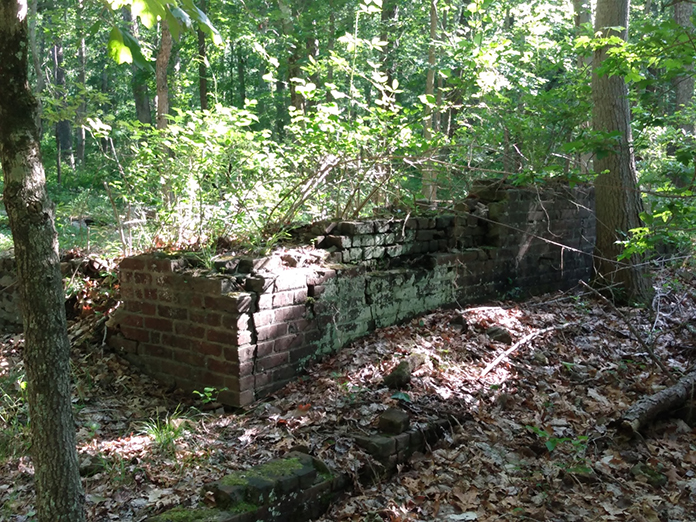
Depending on whether visitors decide to leave the trail, which is not recommended, the entire hike will total just over two miles, and since horseback riding is permitted at the location, hikers may encounter members of the equine family, and the things they occasionally leave behind.
While the Township of Howell has been discussing the possibility of posting trail cameras in some of their natural areas, currently, the only way to see the animals in sites such as Bear Swamp is for residents and visitors to go to the location themselves.






